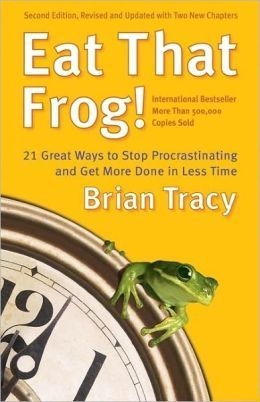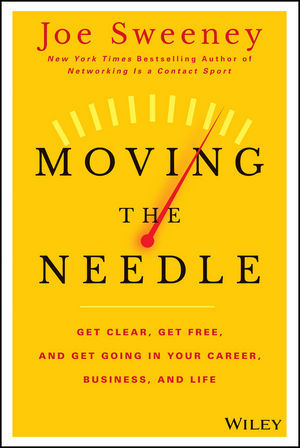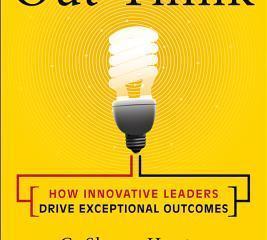

“Eat That Frog! 21 Great Ways to Stop Procrastinating and Get More Done in Less Time” by Brian Tracy (Berrett-Koehler Publishers, $15.95).
With so much coming at you on a daily basis, it’s easy to unconsciously procrastinate about what to do next. Tracy introduces his ABCDE management approach to defining tasks by distinguishing between priorities and posteriorities (i.e. low-value activities).
“A priority is something you do more of and sooner, while a posteriority is something you do less of and later, if at all.”
Posteriorities are the time-consuming empty calories of your workday. Often, they’re the things you can do quickly so you automatically elevate them to the top of your to-do list. It’s likely that interruptions bubble up to the top, too.
The ABCDE management of prioritizing requires you to “think on paper.” Look at your to-do list at the beginning of each day. Categorize the items as follows:
▶ “A” (frogs) – Very important; must do. Ignoring these items diminishes the likelihood of positive consequences. If you have more than one “A” task, assign numerical priority, too.
▶ “B” (tadpoles) – These are should-do tasks. They might eventually become frogs. Tracy states, “Never do a B task when an A task is left undone.”
▶ “C” – Nice to do when you can afford the time. There are no consequences to not doing them.
▶ “D” – Delegate; make the B tasks someone else’s frog or tadpole. This frees time to focus on your A tasks. Be clear about your expectations so the subordinate can classify the task’s priority properly on his/her to-do list.
▶ “E” – Eliminate activities that don’t make a difference. Usually, these are things you do out of habit – like answering the phone and email pings. They’re definitely posteriorities.
The keys to making the ABCDE method work: 1. Take immediate action on your A-1 task; work until it’s completed. 2. Stay committed to following your priorities because discipline forms habit.
“Moving the Needle: Get Clear, Get Free, and Get Going in Your Career, Business and Life” by Joe Sweeney (John Wiley &Sons, $25).
To frame your mindset for reading the book, answer three questions: “Am I having difficulty figuring out where my career is headed?” “What’s my end goal and action plan for getting there?” “What could happen to force me to rethink my plan?”
Your answers should go beyond motivation and inspiration. They need to define clarity of purpose – through values, relationships built and nurtured and a commitment to follow through.
A key clarity exercise: Differentiate yourself from colleagues at work. Identify unique attributes that make you stand out. It’s a brand-building process that first focuses on the attributes of others. By understanding them, you get a better picture of value added.
The exercise involves asking thought-provoking questions and really listening to the answers. You’ll not only discover common ground but also learn more about: 1. how your skills compare, 2. what holes you need to fill, 3. how you can add value, and 4. how they can add value.
With what you discovered in mind, create action plans. These require follow-through on what you intend to do for others – and yourself. They’ll always require tweaking because, when it comes to growth, “when you change the way you look at things, the things you look at change.” Embracing change identifies ways to constantly add value to your brand.
There are short exercises at the end of each chapter to keep you on point. Retaking them from time to time as you move your needle will help you focus on what’s next on your agenda.
Jim Pawlak is a nationally syndicated reviewer of business books.






